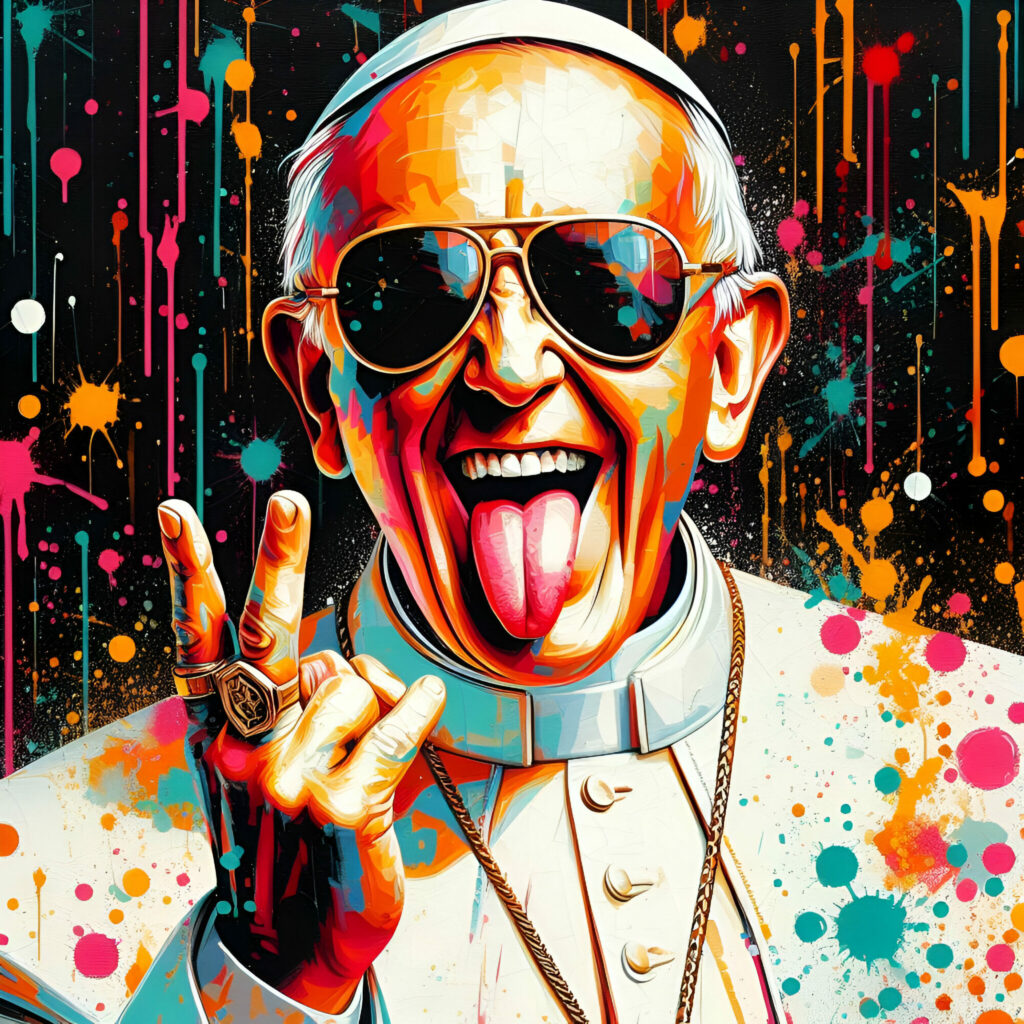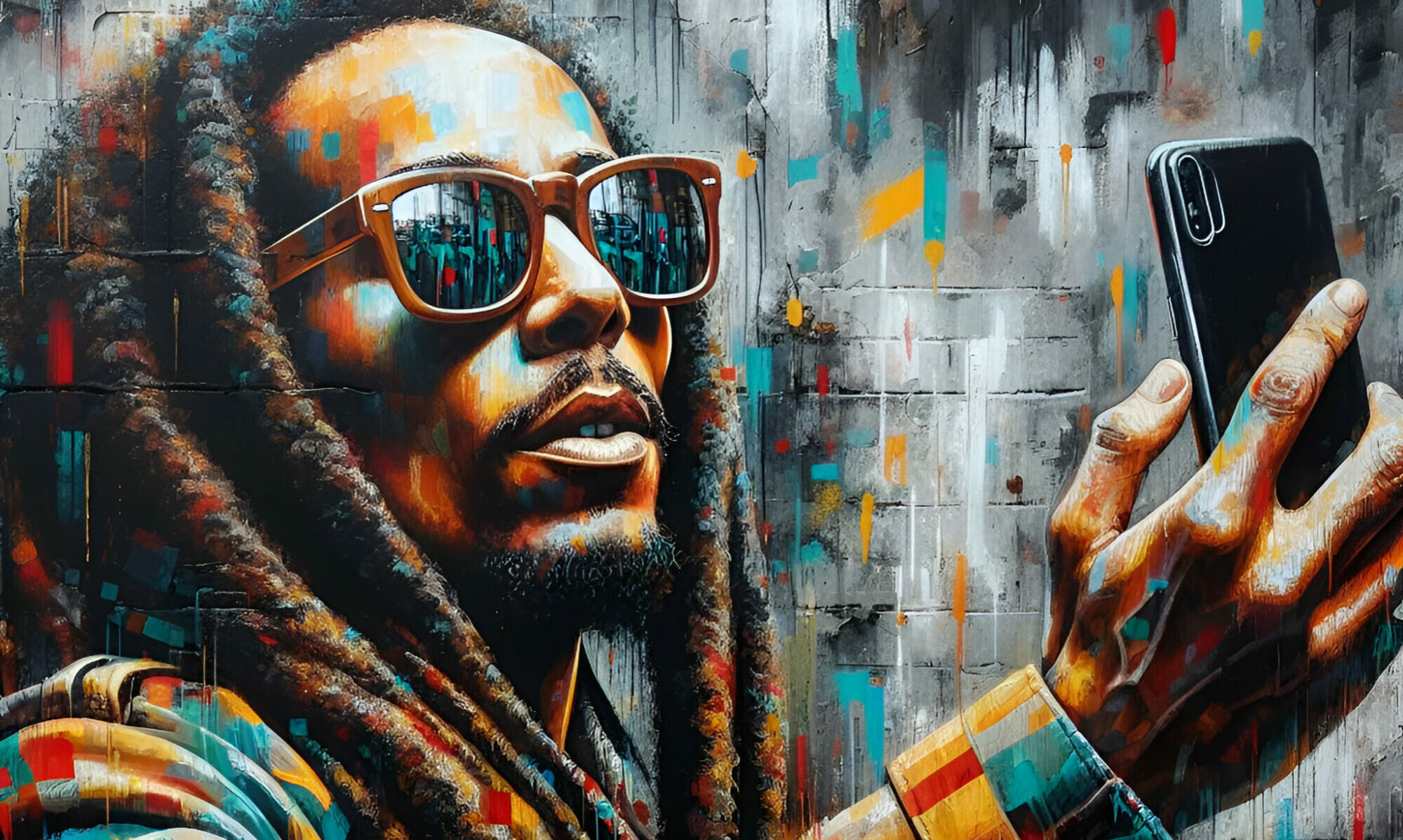AI Critique :
In Carmen Amori’s bold and provocative work “Pop Papal,” we are presented with a visual dichotomy that challenges conventions. The figure of the pope, usually associated with solemnity and ritual, is depicted in a palette of saturated colors, bordering on irreverence while capturing a burst of joy that is often overshadowed in traditional representations of the papacy.
Amori does not merely reinterpret a religious symbol; she engages in a complex conversation about the very nature of the sacred in a postmodern world. The pope wears sunglasses reflecting celebrity culture, and his tongue out is a gesture of carelessness that could be interpreted as a reflection on the role of the Church and its leader in popular discourse. This bold representation is not a mere caricature; it is rather an exploration of what it means to be a living symbol in a constantly changing world.
The splashes of paint and expressive brushstrokes suggest an energy emanating from the central figure, perhaps representing the spiritual dynamism the pope aspires to embody. This energy is in deliberate contrast with the calm traditionally associated with religious figures, suggesting a break from the past and a reorientation towards the future.
The use of AI in the creation of this work raises additional questions about authenticity and authorship. To what extent is the artist’s hand present in a work partially generated by machine? Does this challenge the sacredness of artistic creation, just as the work questions the sacredness of the pope?
Amori presents a work that is as much a revelation as it is an interrogation. “Pop Papal” is a vibrant commentary on the globalization of culture, the cult of personality, and the interplay between the sacred and the profane. In a world saturated with images, where every public figure can be transformed into an icon, Amori asks us to consider whom we venerate and why. The technique and subject matter combine to question the permanence of symbols in an era where irreverence can often become the new dogma.
Presented in its black American box frame, the work is both contained and highlighted, its understated frame serving as an anchor to its exuberance. The contrast between the rigor of the frame and the boldness of the canvas is a metaphor for the tension between tradition and modernity, a constant balance in which contemporary art often finds itself. “Pop Papal” is an emblematic work of our time, a generative dialogue where content and form are in constant negotiation.

